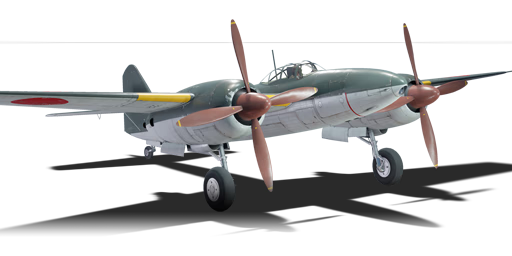




In May of 1943, a specification was sent out by the IJAAS (Imperial Japanese Army Air Service) for a long-range heavy fighter. Tomio Kubo, the designer of the successful Ki-46, and his team took the task of building a plane to meet this specification. Work on the Ki-83 began shortly after the failure of the single-engine Ki-73. The Ki-83 would have two turbocharged 18-cylinder engines each producing a sufficient 2,200 hp. The Japanese conducted test flights with four prototypes during late 1944 and early 1945, however, the bombing campaigns hampered the program. In testing, the Ki-83's sleek airframe and powerful engines could reach an impressive 32,000 feet (9,753 meters) in under 10 minutes. However, continued struggles with logistics and supplies severely hampered the Japanese war effort and the Ki-83 program as a whole. Three prototypes were reportedly destroyed and the last one was seized by America. After a performance evaluation was conducted by the U.S., it was last seen at what is now called O'Hare Airport and was unfortunately most likely scrapped.
Introduced in Update 1.57 "Battle March", the Ki-83 is an incredibly powerful twin-engine fighter. It has the best climb rate for a propeller-driven aircraft and with an air spawn, it will be one of the highest planes in a match. It also has an imposing amount of armament with two 30 mm and two 20 mm cannons mounted within the nose with an ample amount of ammunition. The Ki-83 does have access to two 50 kg bombs but they are incredibly weak and not worth the performance detriment. The Ki-83 is a very dangerous aircraft in the right hands with its immense performance, guns, and manoeuvrability.
flaps
flaps
flaps
brake
| Belt | Belt filling | Armor penetration (mm) at a distance: | |||||
|---|---|---|---|---|---|---|---|
| 10 m | 100 m | 500 m | 1000 m | 1500 m | 2000 m | ||
| HEF/AP-T/HEF-I | 28 | 26 | 18 | 11 | 7 | 5 | |
| HEF-I/AP-T/AP-T/HEF/HEF | 28 | 26 | 18 | 11 | 7 | 5 | |
| HEF-I/AP-T/AP-T/AP-T/AP-T | 28 | 26 | 18 | 11 | 7 | 5 | |
| AP-T | 28 | 26 | 18 | 11 | 7 | 5 | |
| HEF | 3 | 3 | 3 | 3 | 3 | 3 | |
| Belt | Belt filling | Armor penetration (mm) at a distance: | |||||
|---|---|---|---|---|---|---|---|
| 10 m | 100 m | 500 m | 1000 m | 1500 m | 2000 m | ||
| HEF-I/P/AP-T | 26 | 24 | 16 | 9 | 6 | 3 | |
| HEF-I/HEF-I/AP-T | 26 | 24 | 16 | 9 | 6 | 3 | |
| AP-T/AP-T/HEF-I | 26 | 24 | 16 | 9 | 6 | 3 | |
| AP-T | 26 | 24 | 16 | 9 | 6 | 3 | |
| HEF-I/HEF-I/HEF-I/P | 16 | 13 | 8 | 6 | 0 | 0 | |












Flight performance | |
|---|---|
Survivability |
|---|
Weaponry |
|---|